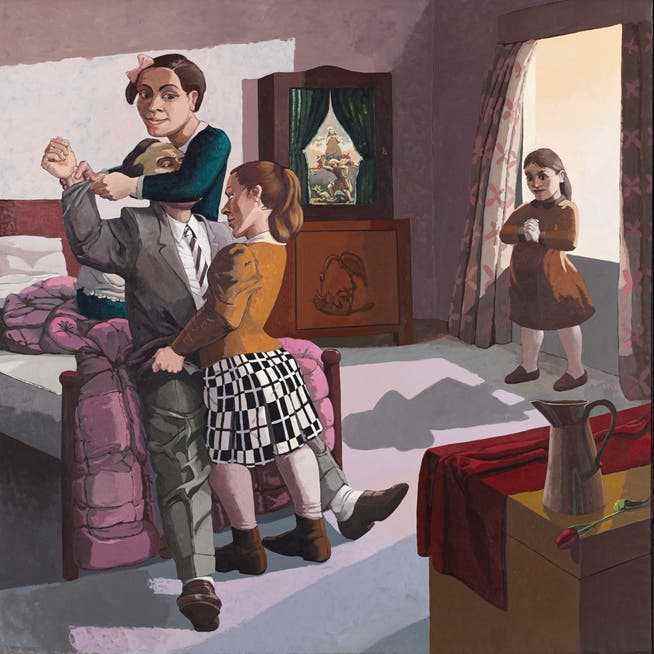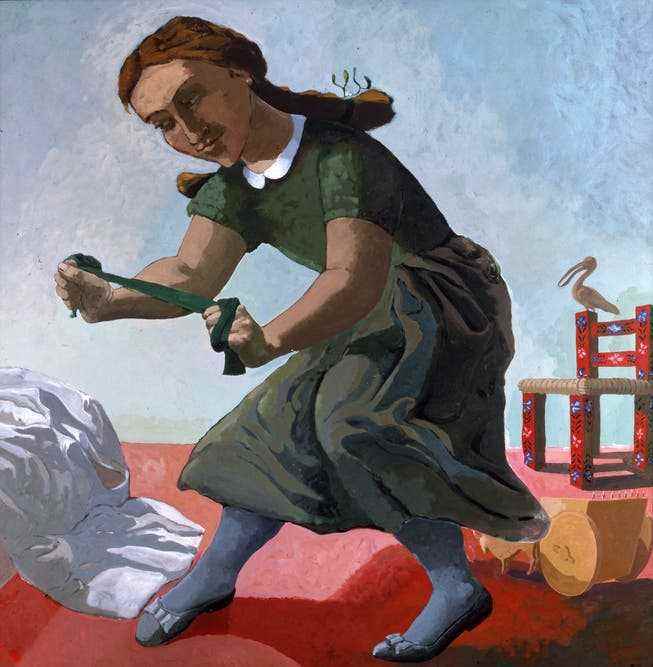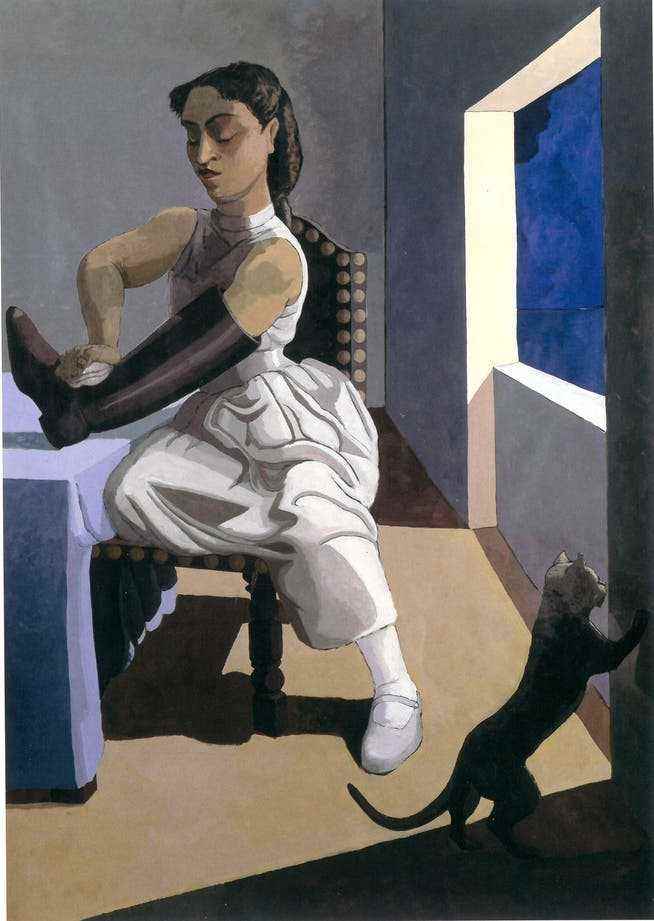The Portuguese-British artist is considered one of the most important contemporary figurative painters. She died in London at the age of 87.
Paula Rego in her London studio.
Good girls go to heaven, bad girls go everywhere. This phrase, which rebellious pubescent girls once defiantly wore as an imprint on their T-shirts, must have served Paula Rego as a credo when raising her two daughters. In any case, the Portuguese-British painter, who was born in Lisbon in 1935 into an upper-class family, did not think much of well-bred “daughters from a good family”. In her art she cultivated a revolt against the social ideal of the good girl that was as humorous and abysmal as it was subtle and subversive.
It was in the late 1980s, at an exhibition at the Serpentine Gallery in London, that her images of naughty monkeys and rabbits from the plush repertoire of children’s rooms caused a creeping disturbance. Then a red monkey hit his wife or offered a dog a poisoned dove. And already the tail of the ne’er-do-well was cut off in another picture. Meanwhile, in another work in a childlike painting style, a bunny presented its pregnant belly to its parents.
One could feel the latent aggressiveness of these brightly colored, roughly brushed paintings, with which Paula Rego suddenly found her own pictorial language after an early work that seemed somewhat indecisive and oscillated between figuration and abstraction. And you suspected that bad, forbidden things were going on when you soon became an observer of secret children’s games of little girls who were not at all squeamish about their lap dogs.

Paula Rego: «The Family» 1988, acrylic on paper on canvas.
There was fed, combed, pulled, tugged and adjusted. Bows and chains were handled, with an impetus and childlike zeal on the part of the protagonists, so that one wanted to intervene and put a stop to the somewhat too far-reaching, perhaps even encroaching game. Or was that just an interpretation? Are children’s games completely harmless? Welcome to the world of Paula Rego. One was confronted with a figurative painting that threatened to open up abysses despite all the superficial innocence of everyday domestic scenes.
Late celebrity
Paula Rego’s pictorial narratives of girls and young women who, when playing with domestic animals or caring for boys and young men, go about their work in an extremely self-confident, if not downright aggressive manner, have meanwhile become famous. Later, however, the painter experienced the broad recognition that she deserves beyond her two home countries, Portugal and England. This year’s Venice Biennale, which is strongly influenced by female artists, would be unthinkable without Paula Rego, who is prominently represented.

Paula Rego: «The Little Murderess», 1987, paintings.
The artist was recently honored with an extensive retrospective at Tate Britain in London, which is currently on view in Malaga (until August 21). Individual shows from Hanover to Istanbul are also planned. A retrospective at the Orangerie in Paris in 2019 made it clear in the title “Les contes cruels de Paula Rego” that Paula Rego repeatedly recalled the latent cruelty of the child’s soul, the power struggles between the sexes and the revolting revenge of young women.
Paula Rego grew up in Lisbon during the Salazar dictatorship. Her Anglophile father sent her to England to study at the Slade School of Fine Art in London. This is how she escaped the restrictions in her authoritarian, decidedly patriarchal homeland. In England she met her husband, the painter Victor Willing. The marriage was difficult, he was diagnosed with multiple sclerosis in the mid-sixties and although he treated her poorly, Paula Rego nursed her husband until his death in 1988.
Plagued by recurring depressions, the artist dealt with fairy tales and psychoanalysis. For her, painting became a means of processing things artistically in order to become aware of her own emotions. For Paula Rego, art acquired a self-therapeutic aspect.
But painting is also an erotic act, the artist once said. She sees a job well done as a relief. And she is actually married to her pictures. A key image is her painting “The Family” from 1988. It shows a man in a suit sitting on the edge of the bed, who is being taken over by a woman and two girls in such a way that it is almost impossible to distinguish between caring and sexual assault.

Paula Rego: «The Policeman’s Daughter» 1987, painting.
In other paintings, young maids part and comb the hair of youths, polish boots to a high gloss, lace shoes so that everything gets an erotic-aggressive touch. It seems as if the domestic power of a female staff member condemned to powerlessness to serve is at work. Paula Rego was also politically involved. In 1998, in response to a failed abortion legalization referendum in Portugal, she painted a haunting series of paintings that reveal the dangers of illegal intervention.
Her art thrives on the psychological tipping point. Everything threatens to slip away from the harmless and familiar into the uncanny. Paula Rego was a master at that. The painter displayed incredible vitality in depicting the various forms of love as a power struggle between dominance and submission, devotion and rebellion. Paula Rego has died at her home in London at the age of 87 after a short illness.
